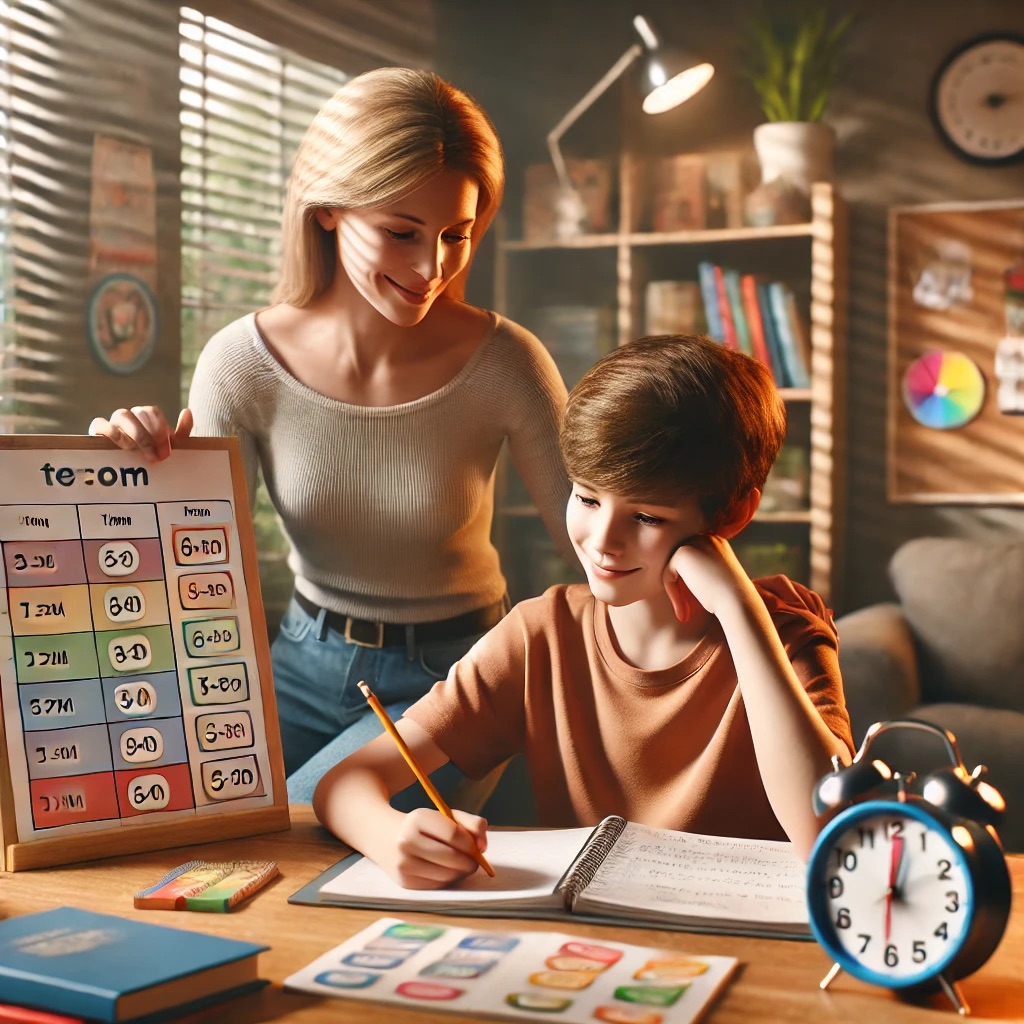Helping Your Child Learn to Focus with ADHD
Attention Deficit Hyperactivity Disorder (ADHD) is a neurodevelopmental disorder that can make it challenging for children to focus on tasks, complete assignments, or stay organized. While ADHD presents unique challenges, parents can adopt effective strategies to help their child build focus and self-regulation skills. Below are research-backed techniques to support children with ADHD in learning how to focus.

1. Establish a Routine
Children with ADHD thrive on structure and predictability. Creating a daily schedule helps reduce distractions and provides clear expectations.
• Why it works: Routines help children anticipate what comes next, reducing anxiety and impulsivity (Pfeiffer, 2022).
• How to implement: Use visual schedules, timers, and reminders to organize daily activities, including homework, chores, and free time.
2. Break Tasks into Smaller Steps
Long or complex tasks can feel overwhelming for children with ADHD. Breaking assignments into smaller, manageable steps can increase focus and reduce frustration.
• Why it works: Research shows that smaller tasks are less intimidating and allow for frequent moments of accomplishment, reinforcing motivation (Barkley, 2021).
• How to implement: Use checklists or break down projects into timed segments, focusing on one step at a time.
3. Create a Distraction-Free Environment
An organized and distraction-free workspace can significantly improve a child’s ability to concentrate.
• Why it works: Reducing visual and auditory distractions supports sustained attention and task completion (Zentall, 2015).
• How to implement: Set up a dedicated workspace away from televisions, phones, or other distractions. Use noise-canceling headphones if needed.
4. Incorporate Physical Activity
Physical activity can help children with ADHD release pent-up energy and improve cognitive function.
• Why it works: Exercise has been shown to enhance attention and executive functioning in children with ADHD (Halperin et al., 2020).
• How to implement: Incorporate regular breaks for movement, such as stretching, jumping jacks, or a quick walk.
5. Use Positive Reinforcement
Children with ADHD respond well to positive reinforcement when they demonstrate desired behaviors.
• Why it works: Praise and rewards can encourage focus by associating effort with positive outcomes (Millichap, 2021).
• How to implement: Provide specific praise for focused behavior, such as, “Great job working on your math problems for 10 minutes without getting distracted!”
6. Teach Self-Regulation Techniques
Teaching mindfulness and self-regulation strategies can help children recognize when they are losing focus and how to redirect their attention.
• Why it works: Mindfulness has been shown to improve emotional regulation and attention span in children with ADHD (Zelazo & Lyons, 2012).
• How to implement: Practice deep breathing exercises, guided meditation, or focus games like “Mindful Minute.”
7. Leverage Technology Wisely
While excessive screen time can worsen focus issues, using technology designed to aid organization and focus can be beneficial.
• Why it works: Tools such as time management apps or gamified educational programs can enhance engagement (Radesky et al., 2020).
• How to implement: Use apps like Forest or Todoist to encourage task management and accountability.
8. Communicate with Educators
Collaboration with teachers can ensure consistent strategies across home and school environments.
• Why it works: A team-based approach provides continuity in behavioral strategies and accommodations (DuPaul & Stoner, 2014).
• How to implement: Share strategies that work at home and ask teachers for regular updates about your child’s progress.
Supporting a child with ADHD requires patience, consistency, and tailored strategies. By implementing routines, breaking down tasks, creating distraction-free environments, and fostering self-regulation, parents can help their child develop the focus and skills necessary for success. Open communication with educators and professionals can further enhance these efforts, ensuring a supportive and cohesive approach.
This article is written by John S. Collier, MSW, LCSW. Mr. Collier has over 25 years experience in the social work field. He currently serves as executive Director and outpatient behavioral health therapist of Southeast Kentucky Behavioral Health based out of London Kentucky. Mr. Collier may be reached by phone at 606-657-0532 extension 101 or by email at [email protected].
References
• Barkley, R. A. (2021). Taking Charge of ADHD: The Complete, Authoritative Guide for Parents. Guilford Press.
• DuPaul, G. J., & Stoner, G. (2014). ADHD in the Schools: Assessment and Intervention Strategies. Guilford Publications.
• Halperin, J. M., et al. (2020). Physical activity intervention improves sustained attention and executive functioning in children with ADHD. Journal of Attention Disorders, 24(10), 1408-1415.
• Millichap, J. G. (2021). Attention Deficit Hyperactivity Disorder Handbook: A Physician’s Guide to ADHD. Springer.
• Pfeiffer, S. (2022). Routines for children with ADHD: Why they matter and how to build them. Psychology Today.
• Radesky, J., et al. (2020). Digital technology and ADHD: Benefits and risks. Pediatrics, 145(S2), S157-S162.
• Zentall, S. S. (2015). Environmental support for children with ADHD. Behavioral Interventions, 30(3), 153-164.
• Zelazo, P. D., & Lyons, K. E. (2012). Mindfulness training in childhood. Developmental Psychology, 48(5), 1023-1031.








